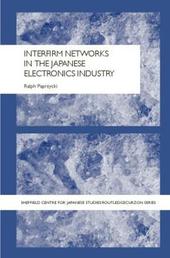
|
Interfirm Networks in the Japanese Electronics Industry
Hardback
Main Details
| Title |
Interfirm Networks in the Japanese Electronics Industry
|
| Authors and Contributors |
By (author) Ralph Paprzycki
|
| Series | Sheffield Centre for Japanese Studies/Routledge Series |
|---|
| Physical Properties |
| Format:Hardback | | Pages:200 | | Dimensions(mm): Height 234,Width 156 |
|
| Category/Genre | Ownership and organization of enterprises |
|---|
| ISBN/Barcode |
9780415336741
|
| Classifications | Dewey:338.476213810952 |
|---|
| Audience | | General | | Postgraduate, Research & Scholarly | | Professional & Vocational | |
|---|
| Illustrations |
1 black & white illustrations, 15 black & white line drawings
|
|
Publishing Details |
| Publisher |
Taylor & Francis Ltd
|
| Imprint |
RoutledgeCurzon
|
| Publication Date |
15 December 2004 |
| Publication Country |
United Kingdom
|
Description
Interfirm Networks in the Japanese Electronics Industry analyses changes in production networks in the Japanese electronics industry. Japan's post-war success in the assembly industries (primarily automobiles and electronics) is frequently attributed to innovative approaches to the organisation of production: rather than relying on full scale vertical integration or arm's- length market transcactions, Japanese assemblers have tended to forge intricate networks of long-term interfirm business relationships that have afforded them with a host of advantages over their competitors. Traditionally, these networks have been characterised by hierarchical interfirm relationships resembling a pyramid. Paprzycki argues that as a result of global industry dynamics, such monolithic 'pyramidal' production networks have come under mounting pressure to and are giving way to an increasing diversity of network arrangements. A major contributing factor is the growing cost and complexity of technology, which forces even the largest manufacturers to look beyond traditional network boundaries in order to gain access to complementary (technological) assets and capabilities; customer specific assets and capabilities, and with them traditional keiretsu and subcontracting relationships, are declining in importance. Paprzycki's study shows how network arrangements have adapted in order to cope with profound changes in the competitive environment and how the traditional production, together with many of the features described in the literature on Japanese industrial organisation, have begun to unravel.
Author Biography
Dr Ralph Michael Paprzycki is currently a research fellow at Hitotsubashi University, Tokyo.
|